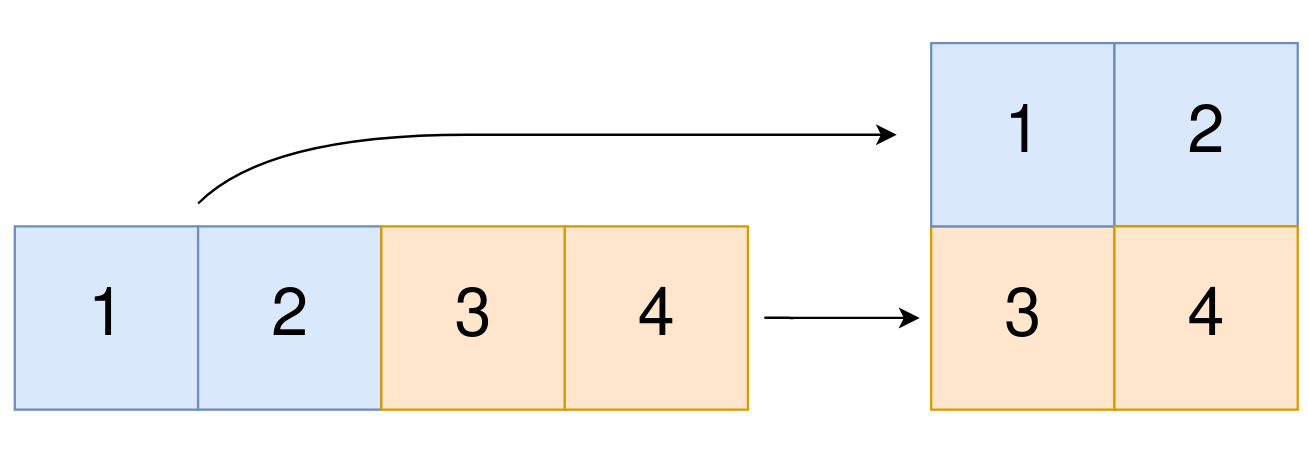You are given a 0-indexed 1-dimensional (1D) integer array original, and two integers, m and n. You are tasked with creating a 2-dimensional (2D) array with m rows and n columns using all the elements from original.
The elements from indices 0 to n - 1 (inclusive) of original should form the first row of the constructed 2D array, the elements from indices n to 2 * n - 1 (inclusive) should form the second row of the constructed 2D array, and so on.
Return an m x n 2D array constructed according to the above procedure, or an empty 2D array if it is impossible.
Example 1:

Input: original = [1,2,3,4], m = 2, n = 2 Output: [[1,2],[3,4]] Explanation: The constructed 2D array should contain 2 rows and 2 columns. The first group of n=2 elements in original, [1,2], becomes the first row in the constructed 2D array. The second group of n=2 elements in original, [3,4], becomes the second row in the constructed 2D array.
Example 2:
Input: original = [1,2,3], m = 1, n = 3 Output: [[1,2,3]] Explanation: The constructed 2D array should contain 1 row and 3 columns. Put all three elements in original into the first row of the constructed 2D array.
Example 3:
Input: original = [1,2], m = 1, n = 1 Output: [] Explanation: There are 2 elements in original. It is impossible to fit 2 elements in a 1x1 2D array, so return an empty 2D array.
Example 4:
Input: original = [3], m = 1, n = 2 Output: [] Explanation: There is 1 element in original. It is impossible to make 1 element fill all the spots in a 1x2 2D array, so return an empty 2D array.
Constraints:
1 <= original.length <= 5 * 1041 <= original[i] <= 1051 <= m, n <= 4 * 104
Solution: Brute Force
the i-th element in original array will have index (i//n, i % n) in the 2D array.
Time complexity: O(n*m)
Space complexity: O(n*m)
C++
|
1 2 3 4 5 6 7 8 9 10 |
class Solution { public: vector<vector<int>> construct2DArray(vector<int>& original, int m, int n) { if (original.size() != m * n) return {}; vector<vector<int>> ans(m, vector<int>(n)); for (int i = 0; i < m * n; ++i) ans[i / n][i % n] = original[i]; return ans; } }; |